Considering strongbacks when specifying floor systems can help to satisfy end-users who carry heightened perceptions and expectations of how a floor should perform. Even though strongbacks are not required in U.S. applications, they improve performance more effectively than other type of bridging and are recommended for superior floor systems. Best of all, strongbacks can be put in with minimal price and minimal effort.
What are strongbacks?
Strongbacks are continuous horizontal members that attach perpendicularly to a series of open web joists within the floor cavity. They are 2X dry lumber and their size will vary depending on the depth of the joists. Their purpose is to reduce vibration. In addition, they increase floor comfort and performance by limiting differential deflection under dynamic concentrated loading. During construction, they also prevent joist rollover. See our spec guide for recommended quantity and size.
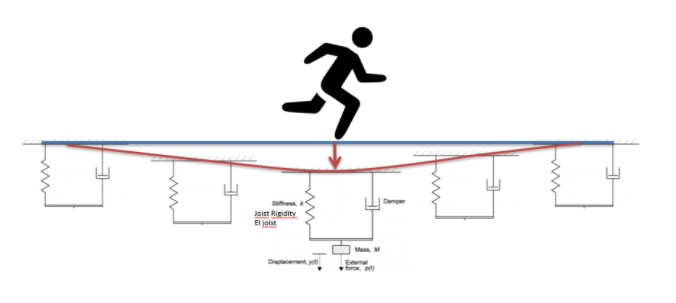
Adding strongbacks in strategic locations increases floor system performance by distributing loads to adjacent joists. In other words, all elements of the floor including joists, subflooring and strongbacks are working together as a unit. The resulting rigidity effectively decreases the intensity of the vibration.
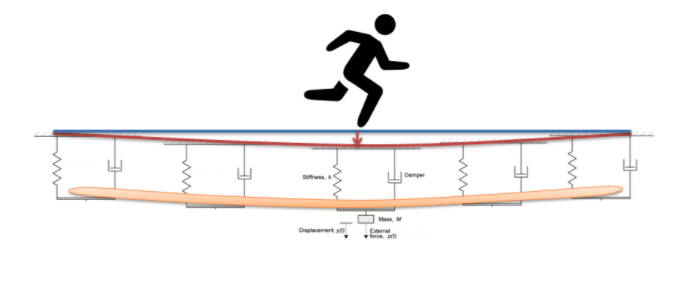
How are strongbacks installed in open web floors?
Strongbacks are only effective if installed properly. They are positioned on edge on the joist’s bottom chord and run continuously through the floor framing cavity. They must be made of dry lumber and installed as close as possible to mid-span. Strongbacks may be cut to allow access for mechanical systems and they may be spliced, making sure that no less than 3 joists are connected per strongback segment.
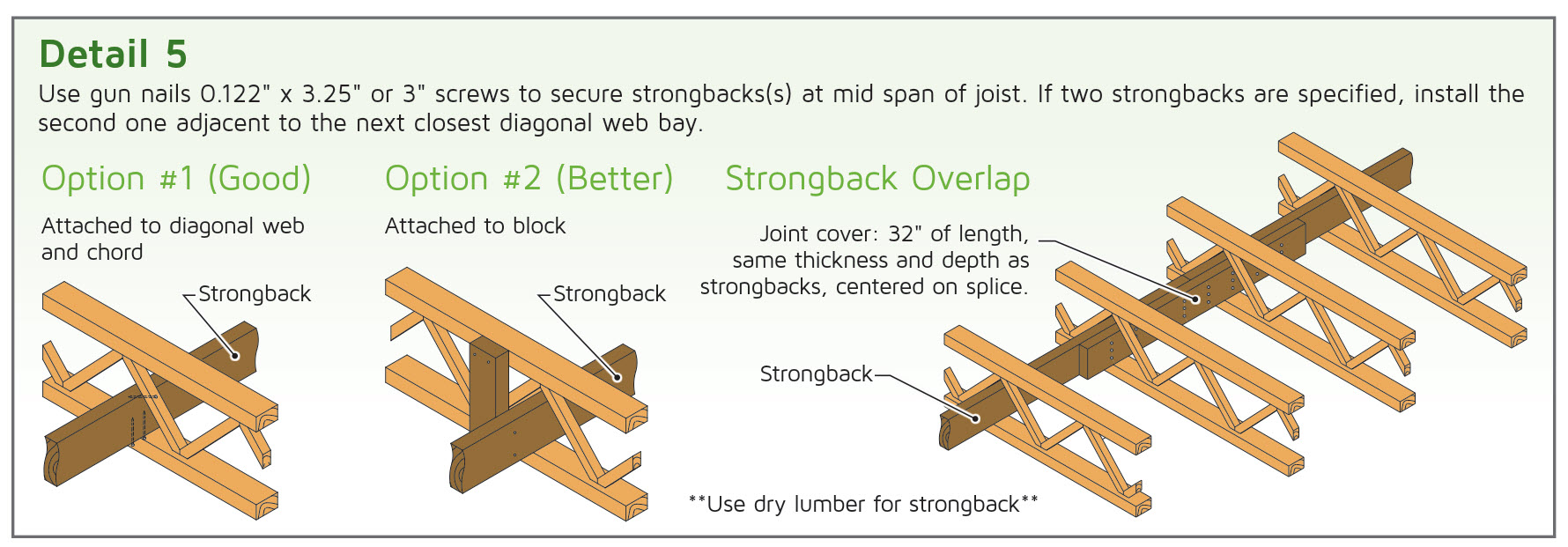
What about in wood I-Joist floors?
You may compare strongbacks in an open web floor system with blocking and nailing block in an I-joist floor system.
The short pieces of I-Joist, which serve as blockages between the joists in an I-Joist floor, are elements working in shear and not in bending as a strongback would do. By the same token, their impacts are limited to transferring part of the dynamic concentrated load to adjacent joists only, unlike a strongback which would transfer the dynamic concentrated load to several joists on each side of the solicited one.
As opposed to blocking and web stiffeners, a strongback can span several joists and the installation is fast and easy.
With wood I-joists, segments of I-joist, rim board or other engineered wood must be cut and installed between the joists.
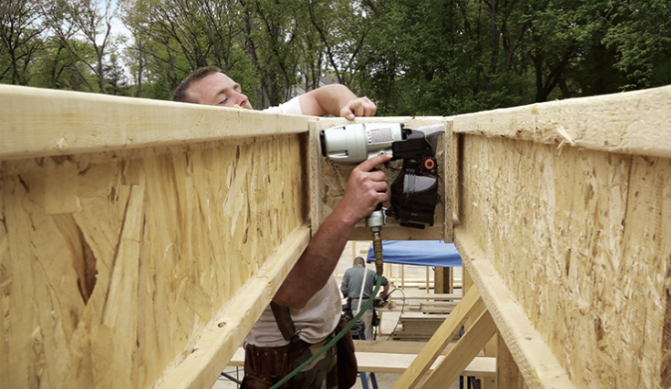
Even though there is no “ideal” standard of performance for floor systems, and comfort is a subjective measure that varies from one person to another,. Canadian building codes have recognized the effects of vibration and may require the installation of strongbacks to minimize it. Although in the U.S. strongbacks are not required by the IRC or the IBC, architects, engineers and building developers recognize the need to produce structures that offer maximum physical and psychological comfort. Therefore, we will always recommend adding strongbacks to your open web floor system!
If you’d like to know more about the TRIFORCE® floor system, download our technical guide or contact us. We’d be glad to show you its advantages.
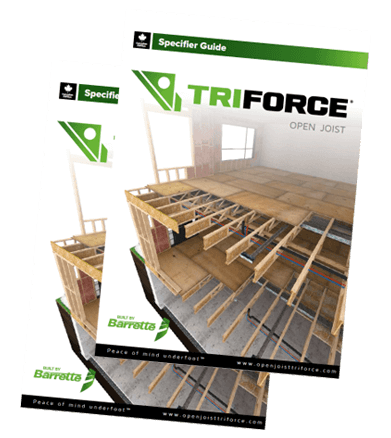
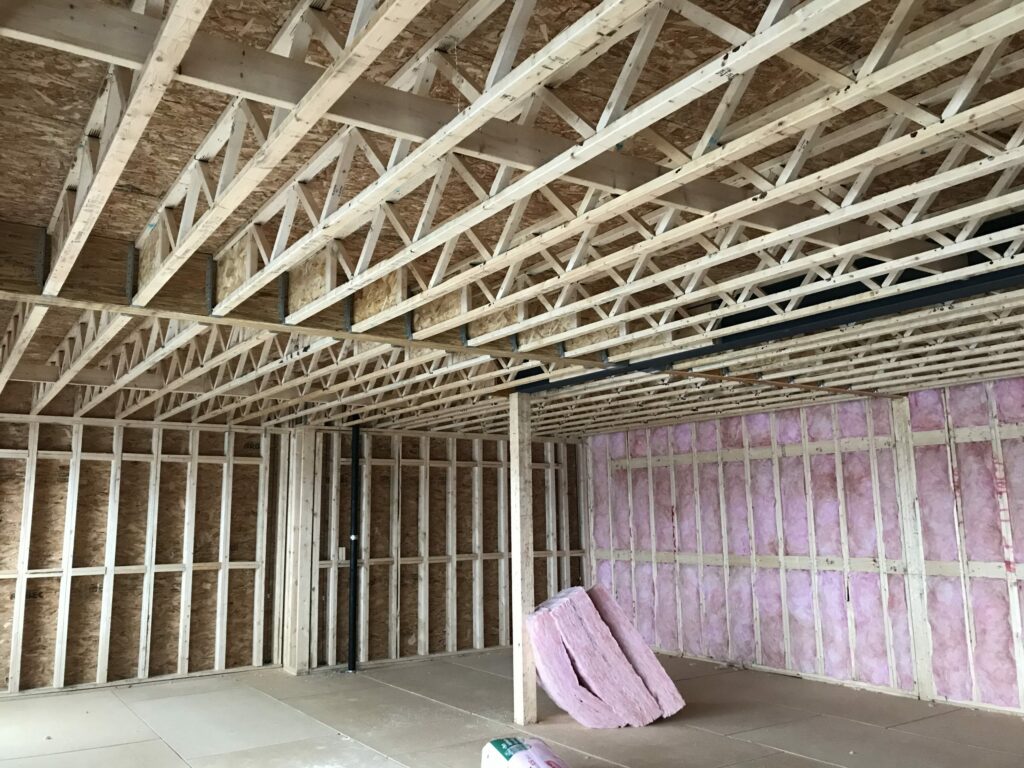
Is it OK to install the strongback laying flat instead of vertical?
Hello Nicholas,
Strongbacks are only effective if installed properly. They are positioned on edge on the joist’s bottom chord and run continuously through the floor framing cavity.
Best regards
The TRIFORCE team